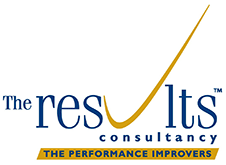 As part of good corporate governance and with an eye driving greater cost-efficiency and value from their advisers, the requirement for competitive pitching skills is always present for professional firms.
As part of good corporate governance and with an eye driving greater cost-efficiency and value from their advisers, the requirement for competitive pitching skills is always present for professional firms.
In recent years firms have become more professional and robust in their approach to pitches. So much so that we’re often asked how teams can stand out against highly competitive quality firms.
From our research, and day to day work helping teams to win, here’s what’s hot – and what’s not – when it comes to the latest pitching approaches.
What’s Hot…
Being selective
Pitching is an expensive activity that doesn’t always pay off. When an invitation to tender comes in it’s vital to evaluate the team’s chances of winning. This involves considering a) what the real value of the opportunity is to your team/firm, b) what will it take to win – and assessing honestly if your firm got the necessary expertise, time and resources, and c) what will make your pitch ‘story’ better than that of your competitors.
Conducting scoping as early as possible in the process
Successful teams conduct their scoping discussions with the client as early on in the process. This enables them to evaluate the real (and often unspoken) drivers behind the pitch, and pose questions to fill the knowledge gaps they have. It also helps them to test team members’ chemistry with key client contacts and build further rapport and situational knowledge. By conducting their scoping early, successful teams are able to refine their proposition and, where it is sensible to do so, play it back to the client ahead of the pitch for further finessing.
Consider your competitors – especially on fees
It’s not always possible to find out who you are competing against, but where you can, pricing is often a big factor to consider in your pitch planning. Keep a record of pitches you’ve won and lost to different competitors to help guide you in future. What points did you compete well or badly on? Consider what strenghts or weaknesses a competitor had in relation to your submission. What did the client say you did better or worse on…you did ask them didn’t you? When it comes to competing against competitor teams again, if you can’t compete on price, consider what added value might be attractive to this client in this pitch.
Understanding and adapting to the differences amongst the decision-makers
Aside from what’s in the client’s brief, it’s important to understand what each individual decision-maker is looking for from the pitch. Good scoping can help uncover the following considerations:
- Departmental and role – goals, objectives, agendas, opportunities, challenges
- Personal/professional – goals, objectives, agendas, opportunities, challenges
- Stylistic preferences – personality, learning style, preferences for the style of proposal/presentation they’ll enjoy
- Interaction and relationships between the other decision-makers
Armed with this information, teams are creating highly tailored pitch responses which resonate with all the different preferences and expectations of the client’s decision-makers.
Allocating time for, and committing to, several rehearsals
Unrehearsed pitch presentations come over as unstructured, lacking in clarity of messages and unbalanced (in terms of airtime allocated to the team members presenting). Rehearsals, done properly, can make a huge difference to enhancing team chemistry, message structure and a confident delivery.
By the time you come to rehearse, the broad flow and content of the presentation should have been agreed, the purpose of the rehearsal can then focus on the following:
- Evaluating the team’s performance in terms of the energy, enthusiasm and teamwork that comes across
- Planning how the team will enter the room and where you will sit in relation to the client
- Working on handovers and links from one subject to another amongst the team
- Practising using the presentation support collateral
- Practising responding to questions from the client and formulating questions your team will ask the client to demonstrate their knowledge and insight and stimulate pitch-winning discussion
- Considering what materials, if any, you propose to leave behind for the client
What’s Not…
Rushing in to formulating your response
Despite the tight deadlines which usually surround a pitch, it pays to invest time to get to grips with the brief, identify the knowledge gaps you have and work as a team to fulfil them. Only then can you avoid missing a vital piece of insight or making a wrong assumption, which undermines your proposition.
Regurgitating an old generic response or selecting pitch team members simply because they have the time
As pitch teams get more polished in their approach, it is important to demonstrate chemistry and synergy with the client at every step of the pitch process. This means fielding the right team for this client’s contacts and creating a proposal and pitch presentation that is highly tailored and focused on them.
‘Talk at’ -style presentations
Most clients are tired of dense PowerPoint presentations and weighty handouts to wade through. Many would rather discuss ideas and have a more conversational experience in the pitch presentation. This enables them to observe the team’s chemistry, energy, interest in their business and the project at hand.
Try this instead…
We’ve seen the approaches below used very successfully. All aim to create a more dynamic and interactive experience in the pitch presentation, which is in turn more memorable for the potential client’s decision-makers.
- Facilitated round table discussions on key issues
- Semi- interactive workshop-type pitches involving the client
- Problem-solving/ brainstorming sessions with a situation ‘live’ for the client
- Bringing a client as part of the pitch team – to explain their ‘relevant’ experience and endorse the team
- Slick demonstrations of technology, using data the client will recognise where possible
Summary
When it comes to delivering a pitch presentation with impact and which impresses and engages the client, invest time to create tailored content which shows the quality of the insight you possess as a team.
Select a small number of key messages and be clear in how you put them across. Support them with examples that back up your claims and showcase your experience and track-record. Above all, field a pitch presentation team who gives off positive energy – both within the team and with the client. None of this is possible, however, without establishing a detailed knowledge of the client and (where possible) the competition you face. Invest time planning your presentation and rehearsing it to ensure you deliver that work-winning performance.
For further advice about competitive pitching and our pitch support services, please contact us on tel 44 (0) 20 7488 4419


